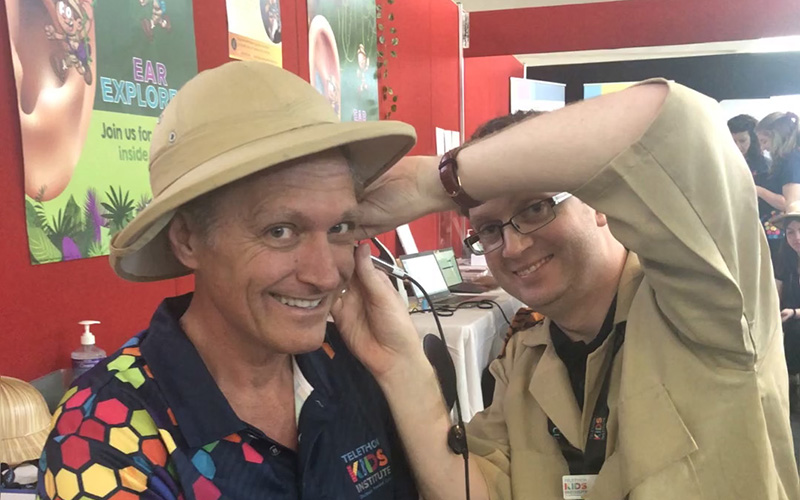
Findings from The Kids Research Institute Australia’s ‘Ear Explorers’ real-life research project undertaken as part of the 2019 Telethon weekend, found short videos were more helpful than photos when making a diagnosis.
According to results published in the Journal of Telemedicine and Telecare, video footage of the eardrum increased the ability for specialists to make a diagnosis. Importantly, there was no difference between the videos and images taken by research assistants with limited training compared with specialists.
Dr Chris Brennan-Jones, Head of Ear Health at the Wesfarmers Centre of Vaccines and Infectious Diseases, said looking inside the ear to see the eardrum (otoscopy) helps specialist doctors diagnose infection and recommend treatment. But getting a clear image of the eardrum can be difficult and can affect how quickly treatment can be given.
“Each year 650,000 Australian children suffer from recurrent or chronic ear infections called otitis media (OM). OM can cause permanent hearing loss but that loss is entirely preventable when treated early,” said Dr Brennan-Jones.
“The average waiting time for assessments can be up to two years. That’s too long for children who are in crucial stages of language, behavioural and educational development.
“Finding what is the best way to identify children with ongoing ear disease early will mean quicker diagnosis and treatment. It could reduce waiting times and travel costs for those living in rural and remote areas or where access to ear health services is limited.
“Down the track that early diagnosis and treatment will make a significant impact on the child’s ability to participate at school.”
